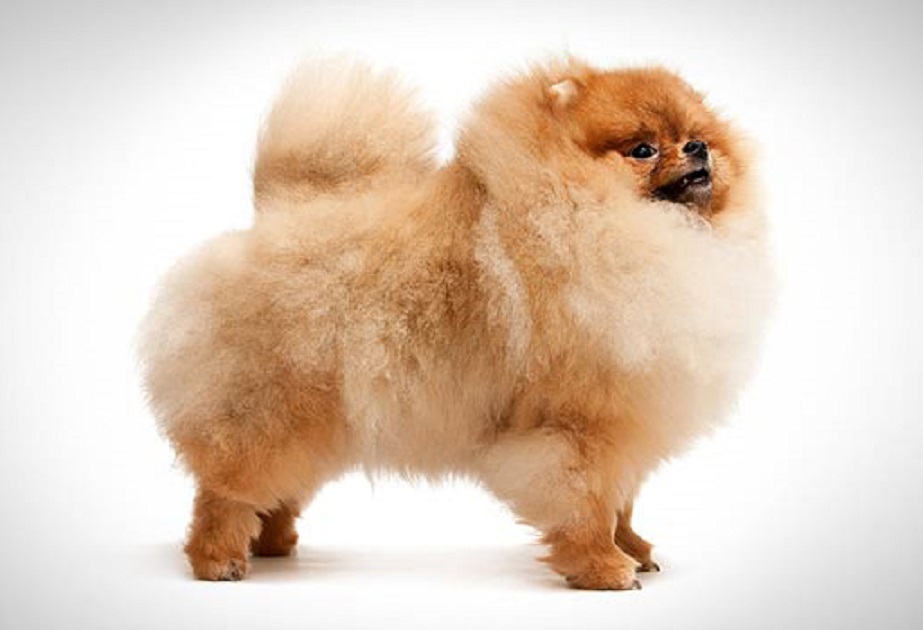
Pomeranian

Navigate through the tabs
Navigate through the tabs below to view the breed's info of your interest.
The breed's info is divided in four sections; namely:
the breed's history ,
the breed's main stats ,
the dog's potential health issues
and finally, how the breed scored in 26 different categories.
All the above information should give you a respectively good overview for the dog of your interest.
Dog Breed's Main Info
The Breed's History:
Pomeranians were developed in the province of Pomerania from the ancient Spitz breeds of the far northern countries. The closest relatives of the Pomeranian are the Norwegian Elkhound, the Schipperke, the German Spitz, the American Eskimo Dog, the Samoyed, and other members of the Spitz, or Northern, group of dogs, all of which are characterized by their wedge-shaped heads, prick ears, and thick furry coats. Early Pomeranians weighed as much as 30 pounds.
Even in the early days of the breed, Poms were popular. Notable people who were said to have Pomeranian-type dogs include theologian Martin Luther, who had a Pom named Belferlein that he mentioned often in his writings, artist Michelangelo, whose Pom sat on a satin pillow and watched him paint the ceiling of the Sistine Chapel, physicist Isaac Newton, whose Pom named Diamond reportedly chewed many of his manuscripts, and composer Mozart, whose Pom was named Pimperl and to whom he dedicated an aria.
In 1761, the appeal of Pomeranians moved to England when Sophie Charlotte, a 17-year-old Princess of Mecklenburg-Strelitz (a neighboring province of Pomerania) married the English prince who was to become King George III.
She brought with her a pair of mostly white dogs named Phebe and Mercury that weighed more than 20 pounds, which was standard at that time. Although they were popular in royal circles, the new breed didn't catch on with the public.
All of that changed during the reign of Queen Charlotte's granddaughter, Queen Victoria. During her 64 years as the Queen of England, Queen Victoria bred more than 15 different breeds of dogs.
In her later years, she was especially fond of Pomeranians, which she first saw in 1888 during a trip to Italy. She fell in love with a sable and red Pom named Marco who weighed only 12 pounds.
Today, many believe that he was the inspiration to breed smaller Pomeranians.
Marco went on to compete under the Queen's name in many dog shows and won many honors. Victoria also bought three other Poms on the same trip to Florence in 1888. After Marco, Victoria's next most famous Pom was a female named Gina who also became a champion at London dog shows. Victoria loved her Poms so much that as she lay dying, she asked that her favorite Pom (named Turi) be brought to her bedside.
Victoria's love of the Pomeranians, especially the smaller ones, inspired English dog fanciers to begin breeding even smaller Poms. From 1900 until the 1930s, Pomeranians often had the largest number of entries at Crufts dog show, Britain's national championship. It was during this time that the breed standard was stabilized, with the size coming down to its present weight and the coat developing its characteristic deep frilling.
Also during this time, a wider range of colors became available. Early Poms were primarily white, black, chocolate or blue, but after an orange dog began winning at dog shows in the 1920s, the range of colors expanded.
The popularity of the Pom spread across the Atlantic. In 1888, a Pomeranian named Dick was the first Pom entered into the American Kennel Club (AKC) stud book. In 1892, the first Pom was entered in a dog show in New York. After the AKC recognized the breed in 1900, Pomeranians quickly grew in popularity in the United States. In 1909, the American Pomeranian Club was accepted as a member club of the AKC and designated as the Parent Club for the breed.
By mid-century, Poms were one of the most popular dog breeds in America.
Today they rank 14th among the 155 breeds and varieties registered by the AKC.
Country of Origin:
Germany
Breed Group:
Companion
Height:
7 inches to 1 foot (17,78 to 30,48 cm)
Weight:
3 to 7 pounds (1,36 to 3,18 Kg)
Life Span:
12 to 16 years
Potential Health Issues:
Eye Problems,
Hip Dysplasia,
Legg-Perthes Disease,
Patellar Luxation,
Allergies,
Epilepsy,
Collapsed Trachea,
Dental Problems
Adaptability
Apartment Living:
First Time Owners:
Sensitivity:
Being Alone:
Cold Weather:
Hot Weather:
Friendliness
Affection With Family:
With Kids:
With Dogs:
With Strangers:
Health and Grooming
Shedding:
Drooling:
Easy To Groom:
Overall Health:
Weight Gain Potential:
Size:
Training
Easiness:
Intelligence:
Mouthiness:
Prey Drive:
Barking or Howling:
Wanderlust:
Need For Exercise
Energy Level:
Intensity:
Exercise Needs:
Playfulness:
Our Mobile Application
Check out Our Mobile Application "Dog Breeds Central"
